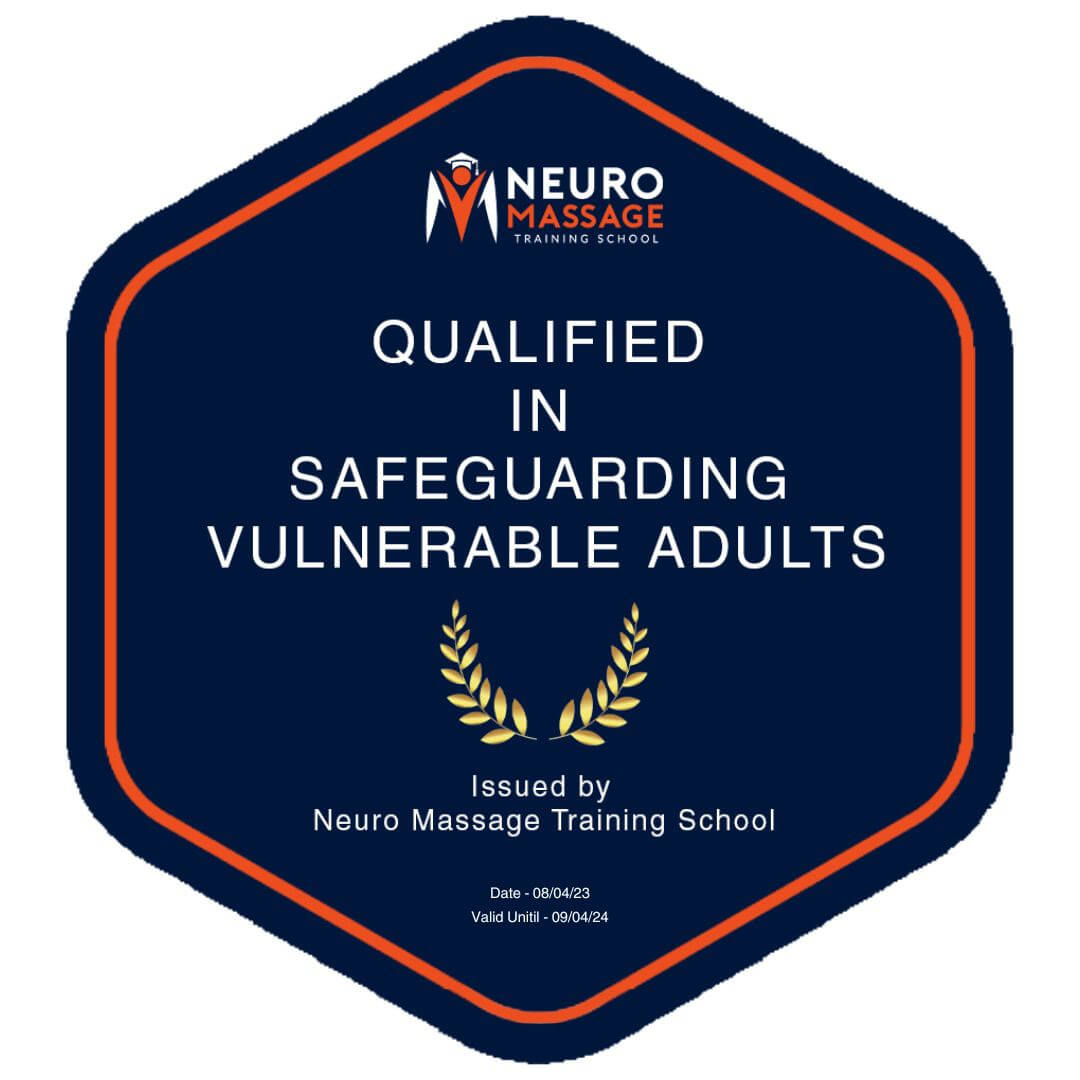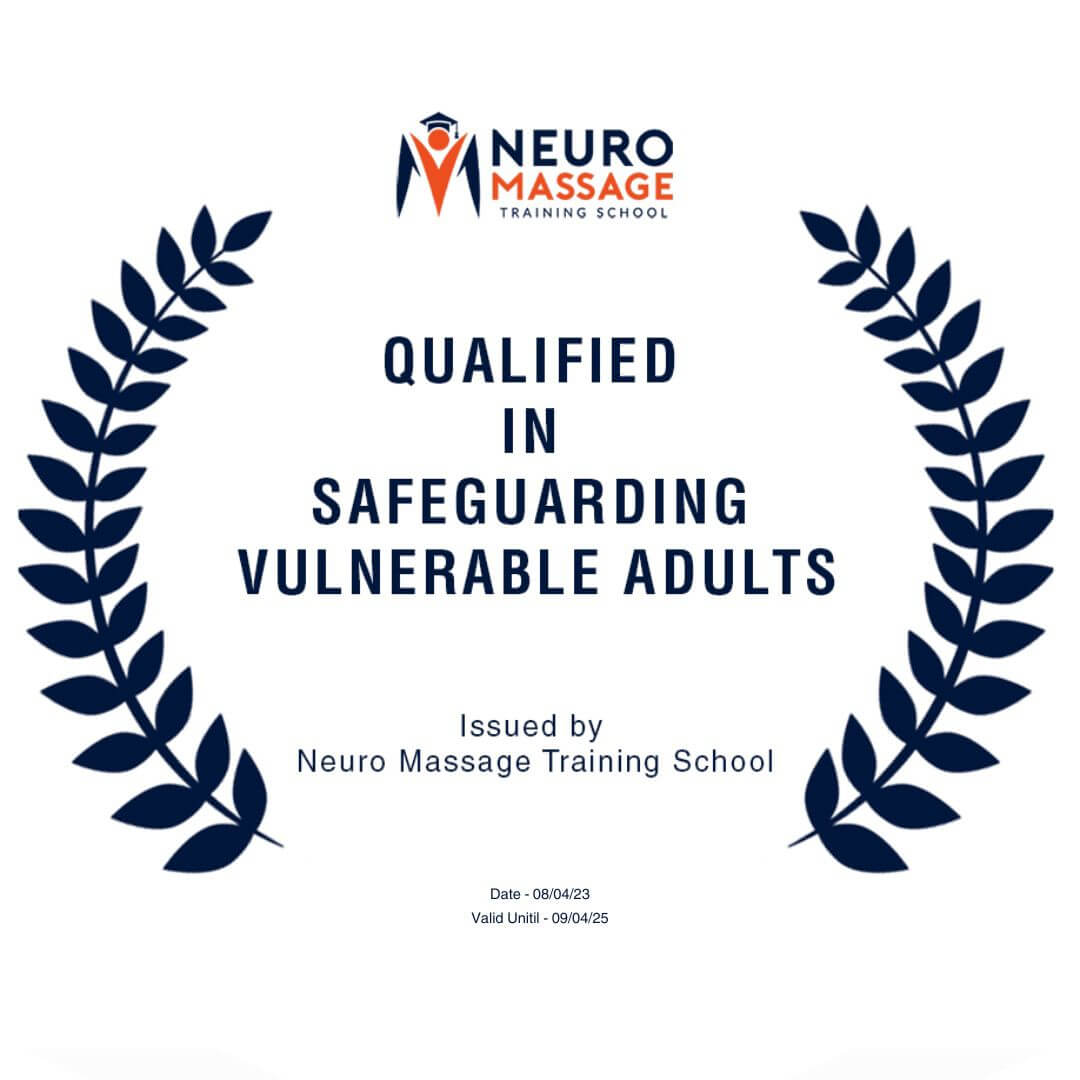
How to Become a Safeguarding Vulnerable Adults Training Expert
Are you passionate about making a difference in the lives of vulnerable adults? Do you want to ensure their safety and well-being?
Becoming an expert in safeguarding vulnerable adults is not only rewarding but essential in today’s society. This guide will walk you through everything you need to know about training in this crucial field. Imagine having the skills and knowledge to protect those who need it most, boosting your career prospects and personal fulfillment.
Dive in to discover how you can make a real impact and become a guardian of those who rely on your support.

Understanding Safeguarding Principles
Understanding safeguarding principles is vital for protecting vulnerable adults. These principles guide actions to ensure safety and dignity. They provide a framework for recognizing and responding to abuse or neglect. Everyone involved in care must grasp these concepts. This knowledge helps create a safer environment for those at risk.
Understanding The Importance Of Safeguarding
Safeguarding ensures the well-being of vulnerable adults. It involves preventing harm and promoting health. This concept is not just about responding to abuse. It’s about actively preventing it. Safeguarding principles guide policies and practices in care settings. They help professionals make informed decisions.
Key Principles Of Safeguarding
There are six core principles in safeguarding. Empowerment is the first. It means supporting individuals to make their own decisions. Protection is the second. It involves taking action to keep people safe. Prevention is next. It focuses on stopping abuse before it happens. Partnership is fourth. It emphasizes working together with communities and other services. Accountability ensures transparency and responsibility. Finally, proportionality ensures responses are appropriate and balanced.
Empowerment In Safeguarding
Empowerment gives individuals control over their lives. It respects their choices and rights. This principle supports individuals in making informed decisions. Training emphasizes understanding and respecting personal wishes.
Protection And Prevention
Protection involves identifying and responding to risks. It means intervening to prevent harm. Prevention focuses on creating a safe environment. It aims to stop abuse from occurring. Training teaches how to recognize signs of risk early.
Partnership And Accountability
Partnership means working with others to safeguard. It involves collaboration with families and professionals. Accountability ensures actions are justified and transparent. It builds trust within communities.
Proportionality In Safeguarding
Proportionality ensures responses are appropriate to the situation. It means balancing intervention with respect for autonomy. This principle guides decision-making to avoid overreaction.
Essential Skills And Qualities
Training in safeguarding vulnerable adults demands specific skills and qualities. These traits ensure effective protection and support for those in need. Being equipped with these skills can make a significant difference. Let’s explore some essential skills and qualities required for this role.
Communication Skills
Clear communication is vital in safeguarding vulnerable adults. It helps convey important information accurately. Listening actively is just as crucial. Understanding concerns and needs is key. This fosters trust and cooperation between you and the adults you support.
Empathy And Compassion
Empathy allows you to connect with vulnerable adults on a personal level. This connection helps in understanding their emotions and experiences. Compassion drives you to care genuinely. It encourages a supportive and respectful environment.
Attention To Detail
Being detail-oriented ensures that no critical information is overlooked. This skill helps in identifying potential risks early. It allows you to notice subtle changes in behavior or circumstances. These observations can be crucial for timely intervention.
Educational Pathways
Embarking on a journey to become proficient in safeguarding vulnerable adults requires dedication and a clear understanding of the educational pathways available. Whether you’re looking to enhance your current skills or start fresh in this rewarding field, knowing where to begin can make all the difference. As you explore various educational options, consider how these choices align with your career goals and personal interests.
Relevant Degree Programs
Choosing the right degree program is a crucial step. Degrees in social work, psychology, or nursing can provide a solid foundation. These programs often include courses on ethics, human behavior, and social justice, which are directly applicable to safeguarding practices.
You might find yourself in a classroom discussing case studies, learning from professors who have firsthand experience. These insights can be invaluable as they offer real-world applications of the theories taught. Ask yourself: how can these programs equip you with the necessary skills to protect vulnerable adults?
Certification Options
Certification can be a game-changer. It not only validates your expertise but also enhances your credibility in the field. Certifications like the Adult Safeguarding Practitioner Certificate are highly respected.
These programs typically involve rigorous training and assessments, ensuring you’re well-prepared for practical challenges. Picture yourself confidently addressing safeguarding issues, backed by your accredited knowledge. Wouldn’t that bolster your professional profile?
Additionally, many certifications offer online options, allowing you to balance learning with your current commitments. Consider how flexible learning fits into your lifestyle and career progression.
As you think about these educational pathways, envision the impact they could have on your career. How can these paths help you make a meaningful difference in the lives of vulnerable adults? The choice is yours, and the opportunities are vast.
Gaining Practical Experience
Practical experience is essential for understanding safeguarding vulnerable adults. Real-world settings provide invaluable insights. They help translate theoretical knowledge into actionable skills. Experience fosters confidence. It also enhances decision-making abilities. Explore various avenues to gain this experience. Start with internships and volunteer opportunities. Consider on-the-job training for deeper learning.
Internships And Volunteer Opportunities
Internships offer hands-on experience in a professional setting. They connect trainees with experienced mentors. This guidance is crucial for skill development. Interns often work in hospitals or care facilities. These environments present real-life scenarios. These scenarios teach problem-solving skills. Volunteering also provides similar benefits. It allows you to practice in community settings. These settings often deal with diverse situations. Volunteering builds empathy and understanding. Both options boost your resume. They show commitment to safeguarding vulnerable adults.
On-the-job Training
On-the-job training offers direct exposure to safeguarding practices. Trainees learn while working. This method integrates learning with professional duties. It helps develop essential skills. Supervisors guide trainees through daily tasks. These tasks include assessing risks and implementing safety measures. Training programs often include workshops. Workshops deepen knowledge through interactive sessions. On-the-job training enhances teamwork. It fosters collaboration with colleagues. This experience is crucial for effective safeguarding strategies. It prepares trainees for real-world challenges.
Staying Updated With Policies
Staying updated with policies is crucial in safeguarding vulnerable adults. Changes in regulations and best practices can impact how you deliver training. Staying informed ensures you provide accurate and current information. It also enhances your credibility as a trainer. Understanding recent developments helps protect vulnerable adults effectively.
Government Regulations
Government regulations often change to address emerging issues. These regulations are designed to protect vulnerable adults from harm. Staying current with these changes is essential. It ensures compliance and promotes safety. Regularly check government websites for updates. Attend workshops and seminars to learn about new laws. Being informed helps you provide relevant training.
Industry Best Practices
Industry best practices evolve with new insights and technologies. They reflect the most effective ways to safeguard vulnerable adults. Engage with professional networks to learn about these practices. Read industry publications and reports for the latest trends. Participating in conferences can offer valuable insights. Keeping up with industry standards enhances your training quality.
Networking And Professional Development
Networking and professional development are key elements in safeguarding vulnerable adults. Building strong connections enhances your learning and career growth. Engaging in professional communities opens doors to new opportunities and insights. It fosters collaboration and innovation within the field.
Joining Professional Organizations
Professional organizations offer valuable resources and networking opportunities. They provide access to the latest trends and developments. Joining these groups connects you with like-minded individuals. This helps in sharing knowledge and experiences. Membership often includes access to exclusive events and publications.
Attending Workshops And Conferences
Workshops and conferences are essential for continuous learning. They provide direct interaction with experts and peers. Attending events keeps you updated with current practices and challenges. You gain practical skills through hands-on sessions. These gatherings are perfect for exchanging ideas and solutions.
Developing Training Programs
Creating a training program to safeguard vulnerable adults involves understanding their needs and developing clear guidelines. Focus on interactive sessions that teach recognizing signs of abuse or neglect. Ensure participants grasp legal responsibilities and know how to report concerns effectively.
Developing training programs for safeguarding vulnerable adults is a crucial task that demands attention to detail and empathy. As trainers, you need to ensure that these programs are not only informative but also engaging and accessible to all participants. The key is to craft content that resonates deeply and addresses the real-world challenges faced by caregivers and professionals working with vulnerable adults.
Identifying Training Needs
The first step in developing a training program is to understand what your audience needs. Speak to them directly and ask what challenges they face. Conduct surveys or focus groups to gather insights into specific areas where they feel less confident. You might discover that some trainees struggle with recognizing signs of abuse or neglect. An approach I found effective was hosting an open Q&A session. It revealed gaps I hadn’t anticipated, such as the need for more guidance on mental health issues. What unexpected needs might your audience reveal?
Creating Engaging Content
Once you’ve identified the needs, the next step is crafting content that captivates. Dry facts alone won’t cut it; you must breathe life into your training. Use real-life scenarios to illustrate complex concepts. A story about a caregiver who successfully intervened in a neglect case can transform abstract principles into vivid lessons. Interactive elements like quizzes and role-playing exercises keep participants actively involved. They don’t just learn—they experience the training. How can you make your content more dynamic? Visual aids are powerful tools. Images, videos, and infographics can make learning accessible and memorable. Could a well-placed graphic help simplify a complicated process? By focusing on these elements, you ensure your training program not only educates but also inspires action and change.
Evaluating Training Effectiveness
Evaluating the effectiveness of safeguarding vulnerable adults training is crucial. It ensures that the training meets its objectives. Trainers must assess if learners understand and apply the concepts. This evaluation helps improve future training sessions. It also identifies areas needing more focus. Effective evaluation benefits both trainers and participants.
Feedback Collection
Feedback collection is a key part of evaluation. Trainers should gather feedback from all participants. This helps in understanding their learning experiences. Use simple surveys or questionnaires for this purpose. Encourage honest and constructive feedback. Analyze this data to see what worked and what didn’t. This step is essential for genuine improvement.
Continuous Improvement
Continuous improvement is vital for effective training. Use feedback to make necessary changes. Adjust training methods and materials based on participant input. Regularly update the curriculum to include new information. This keeps the training relevant and effective. Continuous improvement ensures long-term success of the training program.
Building A Personal Brand
Building a personal brand in safeguarding vulnerable adults training can be your key to success. It’s about creating a distinct identity that resonates with your audience and showcases your expertise. By establishing your brand, you position yourself as a trusted authority and attract opportunities for growth and collaboration.
Online Presence
Your online presence is your digital handshake. It’s the first impression people get of you before they meet you in person. Start by creating a professional profile on LinkedIn. Share your achievements, skills, and experiences related to safeguarding vulnerable adults.
Engage with communities on social media platforms. Join relevant groups and contribute meaningful conversations. Share useful resources, updates, and insights to demonstrate your knowledge.
Have you considered starting a personal blog or website? It’s an excellent way to showcase your expertise. Write about your experiences and learnings in safeguarding, providing value to readers. Make sure your site is easy to navigate and visually appealing.
Publishing Articles And Research
Publishing articles or research papers can solidify your reputation as an expert. Dive into topics that you’re passionate about. Share your unique insights and practical advice.
Consider writing for industry journals or online platforms related to safeguarding vulnerable adults. It’s a great way to reach a wider audience and demonstrate your commitment to the field.
Do you have experiences that others can learn from? Share them. Personal stories can illustrate real-world applications of safeguarding principles. They make your content relatable and engaging.
Have you thought about collaborating with others on research? Partnering with colleagues can bring fresh perspectives and deepen your findings. Together, you can contribute to the field while building your personal brand.
Ultimately, building a personal brand requires dedication and authenticity. How can you showcase your passion and expertise today? Take small steps to expand your presence and influence in safeguarding vulnerable adults training. Your journey begins now.

Frequently Asked Questions
What Is Safeguarding Vulnerable Adults Training?
Safeguarding vulnerable adults training educates individuals on protecting adults at risk from abuse or harm. It covers recognizing signs of abuse, understanding legal responsibilities, and implementing safeguarding policies. This training is essential for professionals working with vulnerable groups, ensuring they can identify and respond to safeguarding concerns effectively.
Why Is Safeguarding Training Important?
Safeguarding training is crucial to protect vulnerable adults from abuse or neglect. It equips professionals with the skills to recognize signs of harm and take appropriate actions. This training fosters a safe environment and promotes the well-being of adults at risk.
It ensures compliance with legal and ethical standards.
Who Should Attend Safeguarding Adults Training?
Professionals working with vulnerable adults should attend safeguarding training. This includes healthcare workers, social workers, and caregivers. The training provides crucial knowledge for identifying and responding to safeguarding issues. It ensures that these professionals can protect vulnerable individuals effectively and uphold their duty of care.
How Long Does Safeguarding Training Take?
The duration of safeguarding training varies depending on the course level. Basic courses may take a few hours, while more comprehensive training can last a few days. It’s important to choose a course that meets your professional requirements and provides thorough knowledge on safeguarding vulnerable adults.
Conclusion
Becoming skilled in safeguarding adults is crucial today. This training protects vulnerable individuals. It builds confidence in handling sensitive situations. You learn to recognize signs of abuse or neglect. Training helps you respond effectively. It equips you with essential skills.
This knowledge ensures safety for those in need. You contribute positively to society. Supporting vulnerable adults is rewarding. It makes a difference in lives. Gain this important knowledge. Start your journey today. Help create a safer community. Make each interaction count.
Your efforts truly matter.





